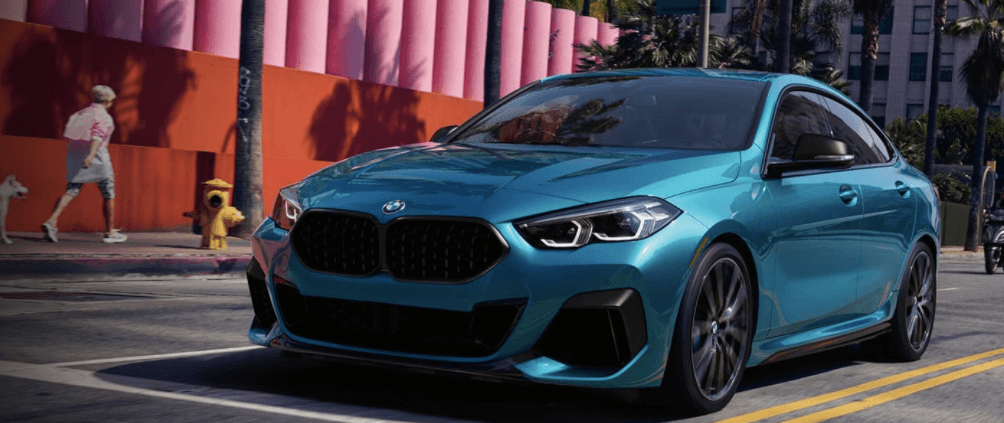When we think of luxury vehicles, performance engineering, and a legacy of innovation, one name often comes to mind: BMW. A brand that has captured the hearts of driving enthusiasts and everyday commuters alike, BMW is more than just a car manufacturer; it’s a symbol of excellence and a commitment to quality. But what exactly does BMW stand for, and what lies behind its iconic status in the automotive world?
In this article, we’ll explore the origins of the BMW name, delve into the brand’s rich history, and uncover the values that have propelled it to the forefront of the automotive industry. Whether you’re a devoted fan or simply curious about automotive legends, join us as we navigate the fascinating story behind BMW and discover the essence of this prestigious brand.
Table of Contents
- Understanding the Origins of BMW and Its Name
- Exploring the Brands Evolution and Iconic Identity
- The Significance of BMWs Logo and Colors
- Why BMW Represents Performance and Luxury in the Automotive World
- Q&A
- Concluding Remarks

Understanding the Origins of BMW and Its Name
The origins of BMW, or Bayerische Motoren Werke, can be traced back to its founding in 1916. Initially established as a manufacturer of aircraft engines during World War I, the company quickly garnered a reputation for precision engineering and innovation. After the war, the Treaty of Versailles restricted Germany’s ability to produce aircraft engines, which led BMW to adapt its manufacturing processes. This pivot eventually resulted in the creation of motorcycles in 1923 and cars in 1928, setting the stage for the brand’s evolution into one of the world’s premier automotive manufacturers.
The name Bayerische Motoren Werke reflects the company’s Bavarian roots, with Bayerische meaning “Bavarian,” Motoren referring to “engines,” and Werke translating to “works” or “factories.” This choice of name not only highlights its geographical heritage but also its commitment to high-performance engineering. BMW’s emblem, featuring a blue and white checkered pattern, symbolizes the Bavarian flag and is often mistakenly thought to represent a spinning propeller, a nod to its early life in aviation. Together, these elements encapsulate a brand synonymous with luxury, performance, and a storied history in the automotive world.
Exploring the Brands Evolution and Iconic Identity
The evolution of BMW as a brand is a remarkable journey that mirrors the advancements in automotive engineering and design. Originally founded in 1916, BMW began as a manufacturer of aircraft engines, a legacy that instilled a sense of precision and performance in its DNA. Over the decades, the transition to motorbikes in the 1920s and then to automobiles in 1928 marked significant milestones in the brand’s identity. As the logo transitioned from its initial color palette, reflecting its aviation roots, to the iconic blue and white checkered design, it represented not just a commitment to quality but also a bold statement of its Bavarian heritage.
The brand’s identity is further cemented by its commitment to innovation and sustainability in modern times. With initiatives aimed at embracing electric mobility and digital transformation, BMW has positioned itself as a leader in the automotive industry. This evolution is also reflected in its diverse range of models, which cater to various consumer needs, from luxury sedans to sporty coupes and environmentally friendly electric vehicles. The iconic kidney grille, a hallmark of BMW design, remains a symbol of its commitment to driving pleasure and performance. Today, BMW stands for performance, luxury, and innovation, continuously pushing boundaries while honoring its storied past.
| Year | Key Milestone |
|---|---|
| 1916 | Founded as an aircraft engine manufacturer |
| 1923 | First motorcycle produced: R32 |
| 1928 | First automobile: BMW 3/15 |
| 1972 | Launch of the 5 Series, establishing the midsize luxury segment |
| 2013 | Introduction of the i Series for electric mobility |
The Significance of BMWs Logo and Colors
The logo of BMW is an iconic symbol recognized worldwide, and its design carries deep-rooted significance. The circular logo is often interpreted as a representation of a spinning propeller, a nod to the brand’s origins in aviation. This connection to flight emphasizes innovation and power, traits that have become synonymous with the BMW experience. The colors—blue and white—are drawn from the flag of Bavaria, the region where BMW originated. This not only reinforces the brand’s heritage but also communicates a sense of pride and tradition within its Bavarian roots.
In terms of branding, the logo and colors work synergistically to convey essential brand values. The blue signifies trust, reliability, and performance, while the white reflects purity and clarity, attributes that BMW incorporates into its engineering and design philosophy. Together, they create a memorable visual identity that resonates with consumers globally. Beyond just aesthetics, the logo acts as a promise of quality, performance, and luxury, ensuring that every BMW vehicle is not just a mode of transport, but a testament to superior craftsmanship.
Why BMW Represents Performance and Luxury in the Automotive World
BMW, short for Bayerische Motoren Werke, has etched its name in the automotive landscape as a symbol of both performance and luxury. From its inception, the brand has combined cutting-edge engineering with a commitment to crafting vehicles that not only thrill but also provide unmatched comfort. Their hallmark emphasis on the driving experience is evident in every model, showcasing powerful engines, advanced handling capabilities, and a driver-centric cockpit design that immerses enthusiasts in the joy of the road. Some key aspects that underline BMW’s dedication to performance include:
- Powerful Engines: Known for their robust powertrains, BMW vehicles often feature turbocharged options that deliver exhilarating acceleration.
- Precision Handling: The brand’s engineering prowess results in nimble vehicles, with a balanced weight distribution and rear-wheel-drive dynamics.
- Innovative Technology: Advanced features, such as adaptive suspension systems and performance-focused driving modes, enhance the overall driving experience.
Luxury goes hand in hand with performance in the BMW lineage, as the brand meticulously curates a blend of premium materials and sophisticated design. Inside, the attention to detail is striking, with plush seating, intuitive technology interfaces, and an ambiance that speaks to sophistication. BMW vehicles are crafted to engage all senses, ensuring that every journey is as enjoyable as the destination. Key elements of BMW’s luxurious experience include:
- High-Quality Materials: From leather upholstery to bespoke finishes, every element reflects a commitment to excellence.
- State-of-the-Art Technology: Infotainment systems and driver assistance technologies elevate convenience and safety.
- Customization Options: BMW offers a range of bespoke services, allowing customers to tailor their vehicles to their exact specifications.
Q&A
Q&A:
Q1: What does BMW stand for?
A1: BMW stands for Bayerische Motoren Werke, which translates to Bavarian Motor Works in English. The name reflects the company’s origins in Bavaria, Germany, where it was founded in 1916.
Q2: Why was BMW initially established?
A2: BMW was originally founded as an aircraft engine manufacturer during World War I. The company later shifted its focus to motorcycle production in the 1920s and eventually became renowned for its luxury automobiles.
Q3: How did BMW transition from aircraft engines to cars?
A3: After World War I, the Treaty of Versailles restricted Germany’s ability to produce military aircraft, prompting BMW to diversify its product line. In 1923, they launched their first motorcycle, the BMW R32, and by the 1930s, they began producing cars, further establishing their reputation in the automotive industry.
Q4: What is unique about BMW’s logo?
A4: The BMW logo features a circular design with blue and white quadrants, representing the colors of the Bavarian flag. It is often mistakenly thought to symbolize a spinning propeller, a nod to the company’s aviation roots.
Q5: How has BMW positioned itself in the automotive market?
A5: BMW is positioned as a premium brand that combines performance, luxury, and innovation. The tagline ”The Ultimate Driving Machine” emphasizes their commitment to creating vehicles that deliver a thrilling driving experience.
Q6: What does the company focus on today?
A6: Today, BMW focuses on innovation, performance, and sustainability. The brand is investing heavily in electric and hybrid vehicles as part of its strategy to adapt to the changing automotive landscape and environmental concerns.
Q7: Are there any notable models from BMW?
A7: Absolutely! Some of the most iconic BMW models include the BMW 3 Series, known for its sporty handling, the luxurious 7 Series, and the high-performance M series, which emphasizes motorsport-inspired engineering.
Q8: How do BMW vehicles stand out from competitors?
A8: BMW vehicles stand out through their blend of dynamic performance, high-quality materials, cutting-edge technology, and a driver-focused experience. The brand also emphasizes a sense of community among enthusiasts, enhancing customer loyalty.
Q9: What does the future look like for BMW?
A9: The future for BMW looks promising, with a strong push towards electric vehicles, advancements in autonomous driving technology, and a commitment to sustainability. As the automotive industry evolves, BMW aims to maintain its reputation as an innovative leader.
Q10: How can I learn more about BMW?
A10: To learn more about BMW, you can visit their official website, explore their extensive history, model lineup, and innovative technologies. Additionally, following automotive news outlets and forums can keep you updated on the latest developments within the brand.
Concluding Remarks
understanding what BMW stands for goes beyond just its name; it encapsulates a rich history of engineering excellence, innovation, and a commitment to the ultimate driving experience. From its origins as a manufacturer of aircraft engines to its evolution into a global leader in luxury automobiles, BMW has consistently embodied values of performance, quality, and precision. Whether you’re a long-time enthusiast or a curious newcomer, recognizing the significance behind the iconic blue and white badge enhances your appreciation for this storied brand. So the next time you see a BMW on the road, you’ll know there’s more to it than just a sleek design – there’s a legacy of passion and dedication driving its journey. Thank you for joining us as we explored the meaning behind BMW; we hope you found it as fascinating as the vehicles themselves!











